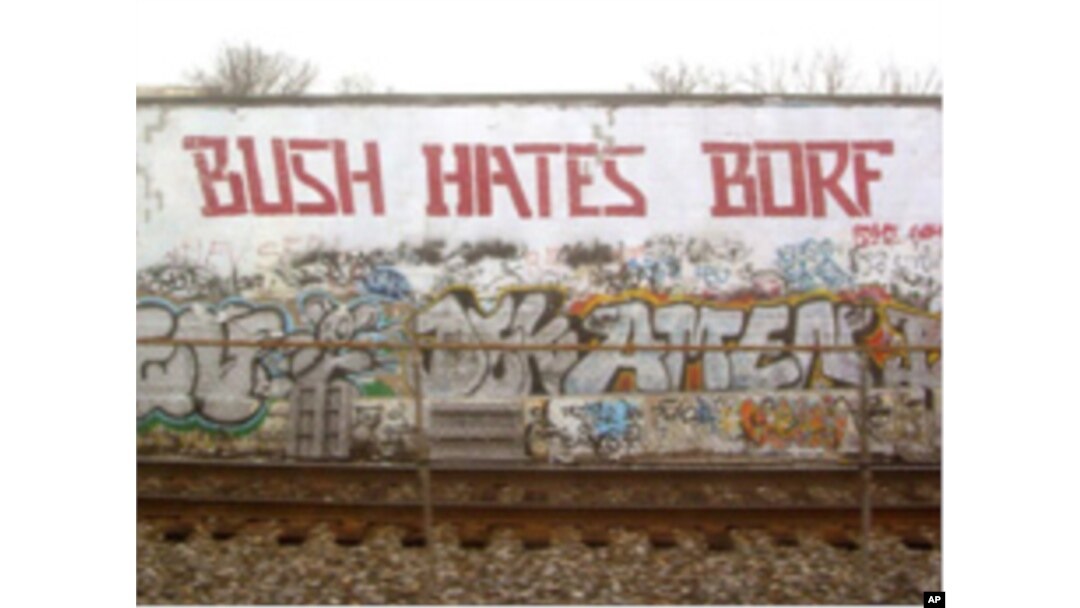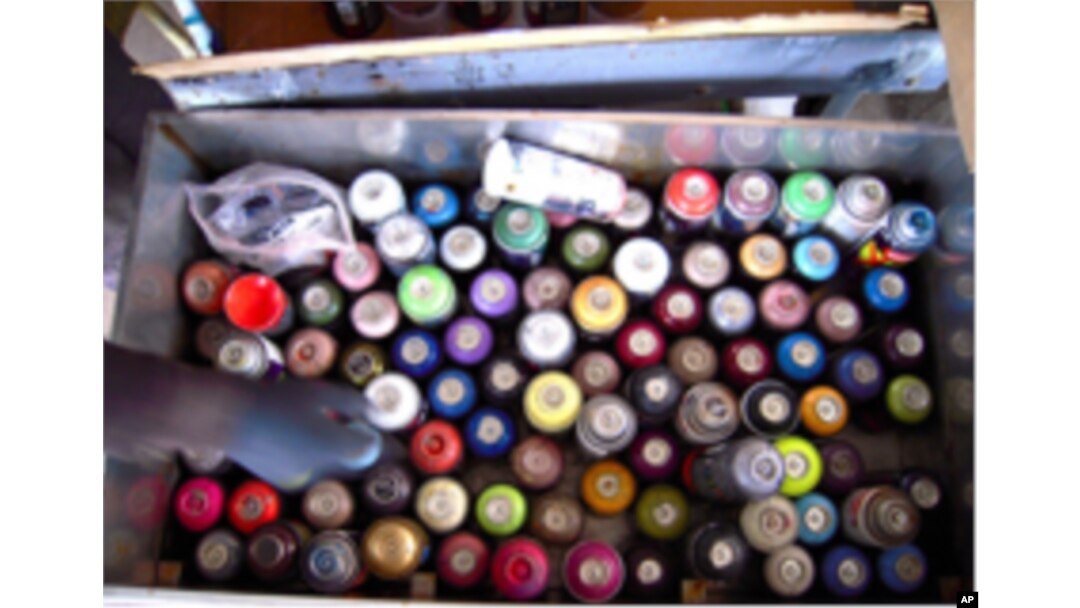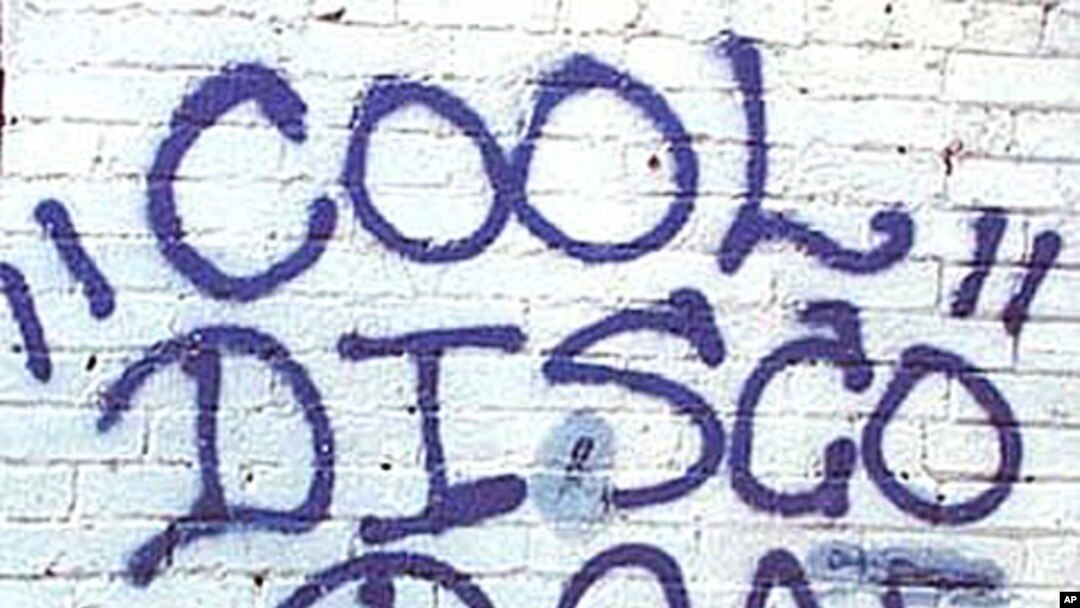Ten years ago, we asked some of our VOA colleagues to give us the name that appeared most often around town.
Several suggested President Bill Clinton's name, but we reminded them that the key word was appeared. We wanted a name that was the most visible, on the streets, out in the open.
Someone else offered McDonald or Wendy. Not bad, since they were, and still are, trade names one sees above fast-food restaurants.

A tagger who called himself Borf gave Cool Disco Dan a run in the mid-2000s. Someone - likely not Borf since the style looked different - changed Bush to Obama recently.
But finally we all agreed that the most visible name - the one we saw most often, especially on the sides and backs of buildings as we rode the city's Metro subway - was...Cool Disco Dan.
Disco Dan was a tagger - a graffiti artist, if one considers spray-painting billboards and overpasses and electric transformer boxes art. Dan had no other message. He just sprayed Cool 'Disco' Dan - presumably in the middle of the night. If it was bigger than a breadbox, Disco Dan tagged it.
He was caught a number of times, but was always released with a warning or small fine. After while, the police pretty much left him alone.

A tagger's arsenal. Maybe a medical mask and a felt-tipped pen or two as well.
After thousands of tags and a year of psychiatric treatment, Disco Dan stopped of his own accord. He went public, identifying himself as Dan Hogg, a go-go music disc jockey. Dan now even writes a blog!
Not everyone dismisses these acts of vandalism as a trifle - a harmless prank. Those who hate graffiti say it's not only ugly and disrespectful but also tarnishes whole neighborhoods.
Nothing seems to stop tagging. But one city, Chicago, launched a program that actually encouraged graffiti artists to create murals on seven walls around town. In the program's first seven years, the city's transit agency found it was spending several million dollars LESS cleaning graffiti off its subway cars, buses and stations.


